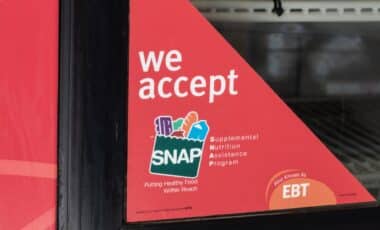Starting this summer, a new garnishment policy will impact retirees who have delinquent federal student loans.
The Trump administration has announced that approximately 452,000 Social Security beneficiaries, behind on their student loan payments, could see a reduction in their monthly benefits by up to 15%.
For many retirees, this reduction could significantly affect their financial stability. However, there are legal solutions available that may help beneficiaries avoid these garnishments.
According to The Motley Fool, understanding these options is crucial for retirees who rely heavily on their Social Security income and want to protect their financial security during this policy shift.
Social Security as a Lifeline for Retirees
Social Security plays a crucial role in the financial stability of retirees. For millions, it is not just a monthly check but a lifeline. In 2023, Social Security helped lift 22 million people above the federal poverty line, including 16.3 million adults aged 65 and older.
This financial support is essential, with up to 90% of retirees relying on their Social Security benefits to meet their needs.
New Garnishment Policy Targets Delinquent Student Loan Borrowers
The Trump administration’s decision to reintroduce Social Security garnishments for delinquent federal student loan borrowers will impact many retirees.
The U.S. Department of Education (DOE) has revealed that 42.7 million Americans carry a collective $1.6 trillion in federal student loans. With the pandemic-related pause on federal student loan collections now over, many seniors, some 452,000 of whom are in default, could soon face garnishments.
This new policy allows up to 15% of Social Security checks to be garnished for delinquent borrowers, with a minimum monthly benefit of $750. However, there is a way to minimize the impact.
A 59% Rise in Borrowers Aged 62 and Above
While higher education student loans may seem to mainly affect younger Americans, the situation is increasingly relevant for retirees.
The number of student loan borrowers aged 62 and above has surged 59% from 2017 to 2023, reaching approximately 2.7 million individuals.
This growing trend of senior borrowers highlights the expanding financial burden on older Americans, especially when federal student loans go unpaid.
Two Legal Ways to Avoid Garnishment
While the most straightforward way to avoid garnishment is to bring student loans up to date, there are two legal options that may help retirees avoid having their benefits reduced.
1. Total and Permanent Disability (TPD) Discharge
Retirees who are permanently disabled may qualify for the Total and Permanent Disability (TPD) discharge, which cancels federal student loans and halts forced collections.
The DOE and SSA have worked together to streamline the process for those disabled before reaching full retirement age.
However, retirees who become disabled after reaching full retirement age must personally apply for the TPD discharge, which may require additional documentation.
2. Financial Hardship Exemption
A significant percentage of retirees may also qualify for a financial hardship exemption. If a retiree’s qualifying expenses exceed their income, including the potential garnishment, they can apply to the DOE for relief.
With an estimated 82% of Social Security beneficiaries currently in default on their federal student loans qualifying for this exemption, this option could be a lifeline for many.
In fact, 37% of Social Security beneficiaries who have a federal student loan (whether in default or not) currently rely on their monthly check for 90% or more of their income.
This makes even a small garnishment, such as the 15% reduction, potentially devastating for many retirees.
Why Retirees Should Act Now
With the new garnishment policies set to begin soon, it is important for retirees to take proactive steps to prevent the reduction of their Social Security benefits.
By applying for a TPD discharge or financial hardship exemption, many retirees may be able to protect their essential income.
Retirees are encouraged to take these actions quickly to ensure that their benefits remain intact, helping them to maintain the financial security they depend on.
Furthermore, according to a 2015 report by the Government Accountability Office (GAO), fewer than 10% of Social Security recipients with forced federal student loan collections have applied for the financial hardship exemption.
Given the large percentage of retirees eligible for this exemption, this is a crucial opportunity for those in need to take action.









